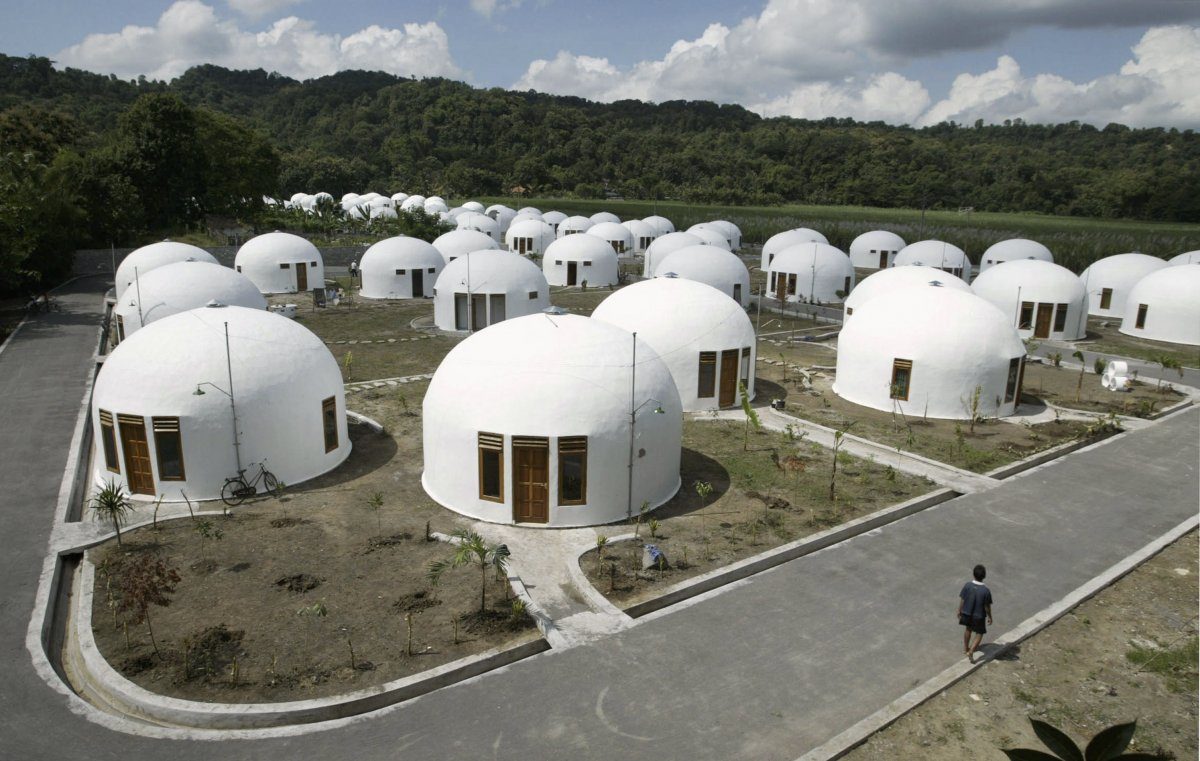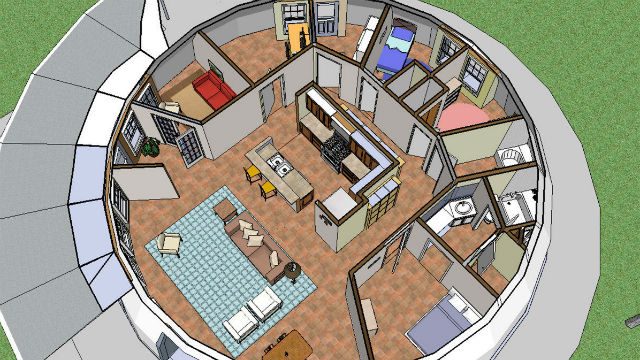SUMMARY
This is AI generated summarization, which may have errors. For context, always refer to the full article.

DAPITAN CITY, Philippines – (UPDATE) In preparation for disasters, an initial 200 monolithic dome houses – believed to be disaster-resilient – will be built at a relocation site in Dapitan.
“We use basalt (rock derived from lava) as the main strengthening component in building monolithic dome houses. It cannot be destroyed by super typhoons, earthquakes, or fires,” said Michael Scott, Philippine Country Manager of Monolithic home builders based in Texas, United States.
He said the technology is totally green. Basalt will be melted at 2,000 degrees Fahrenheit (1093ºC). Strands that are 6-12 microns thin will then be pulled out, banded together, and ran through an adhesive.
“Then we will use it as the reinforcing material,” Scott said.
“About basalt, well a third of Earth has basalt,” he added.
Scott told Rappler that they are eyed by the government to build monolithic dome houses in places hit by Super Typhoon Yolanda (Haiyan). Dapitan, however, will be the first to have such housing since the local government is aggressive in having the technology.”
Another group, Assumption Cares for Mercedes, has built 8 domes in Barangay Busay, Mercedes, Easter Samar and has plans to build more in the area.
Lessons learned
Representative Seth Frederick Jalosjos, of the 1st District of Zamboanga del Norte, said he learned about the monolithic dome houses because of the interagency redevelopment of Pulauan Wharf in Dapitan’s Barangay San Pedro that started a couple of months ago.
Under the redevelopment initiative, the wharf and the road leading to it will be expanded. The 200 informal settler families affected will be the recipients of the monolithic dome houses, which according to Jalosjos, will be funded by the National Housing Authority (NHA).

The devastation brought by Yolanda, on the other hand, pushed Scott to introduce monolithic dome houses to officials working for the rehabilitation of Leyte.
“I saw on TV a father who said that he was hugging a coconut tree while his children were holding his legs and arms, but were slowly carried away by the surge. That should not have happened. We could have saved more lives if we were prepared for it,” Scott told Rappler.
Scott said the monolithic dome houses they will build in Dapitan are low-cost at P290,000 ($6,500) per unit and it will last for centuries.
“Whether a typhoon comes, tsunami, earthquake, or fire comes, I promise you these structures will remain,” Scott said.
The strength of Yolanda was 320 kilometers per hour (kph) at its peak. At that time, the standard strength of structures set by the Department of Public Works and Highways (DPWH) was at 150 kph.
Now DPWH has raised standard strength of houses to 250 kph, and Scott said monolithic dome houses can withstand typhoons of up to 400 kph.
It is not just the basalt, but also the engineering design that makes it disaster proof. The technology is already a hundred years old, but has not been popular.
“The reason is that there are no big associations behind it than there is in metal. The various conglomerates push for metal and those are the guys that everybody listens to,” Scott said.
“It is not the business point of view that is driving me to introduce monolithic dome houses. The desire to save lives is my driving force. I too have a daughter, and we fathers – like that man who lost his children to Typhoon Yolanda – would do anything to see them grow,” he added. – Rappler.com
*USD 1 = P43.9
Add a comment
How does this make you feel?
There are no comments yet. Add your comment to start the conversation.